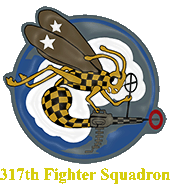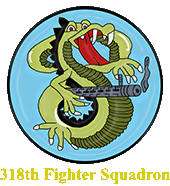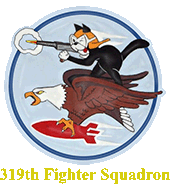The group was first activated in August 1942
as the 325th Fighter Group at Mitchel Field, New York. After
training at Hillsgrove Army Air Field, Rhode Island, the group moved to
North Africa in 1943, where it flew combat missions with the Curtiss
P-40 Warhawk, earning a Distinguished Unit Citation for actions over
Sardinia for engaging a superior force of enemy aircraft and destroying
more than half of them. The group was withdrawn from combat in the fall
of 1943 and re-equipped with the Republic P-47 Thunderbolt.
The 325th began operations with Fifteenth Air Force in December 1943,
and primarily engaged in bomber escort operations. It received a
second DUC for a mission on 30 January 1944 when the group flew more
than 300 miles at very low altitude to surprise the enemy fighters that
were defending German airfields near Villaorba, Italy; by severely
damaging the enemy's force, the 325th enabled heavy bombers to strike
vital targets in the area without encountering serious opposition.
The group converted to North American P-51 Mustang aircraft in May 1944
and provided the fighter escort on the first shuttle bombing mission
from Italy to Russia in early June 1944, and became the first American
group to score a victory while flying from a Russian base. It
escorted heavy bombers during long-range missions to attack the
Messerschmitt factory at Regensburg, the Daimler-Benz tank factory at
Berlin, oil refineries at Vienna, and other targets, such as airfields,
marshalling yards, and communications targets in Italy, France, Germany,
Czechoslovakia, Austria, Hungary, Romania, and Yugoslavia. It also
covered operations of reconnaissance aircraft and strafed such targets
as trains, vehicles, and airfields. The group continued combat
operations until May 1945. The group moved back to the U.S. and was
inactivated after V-E Day.


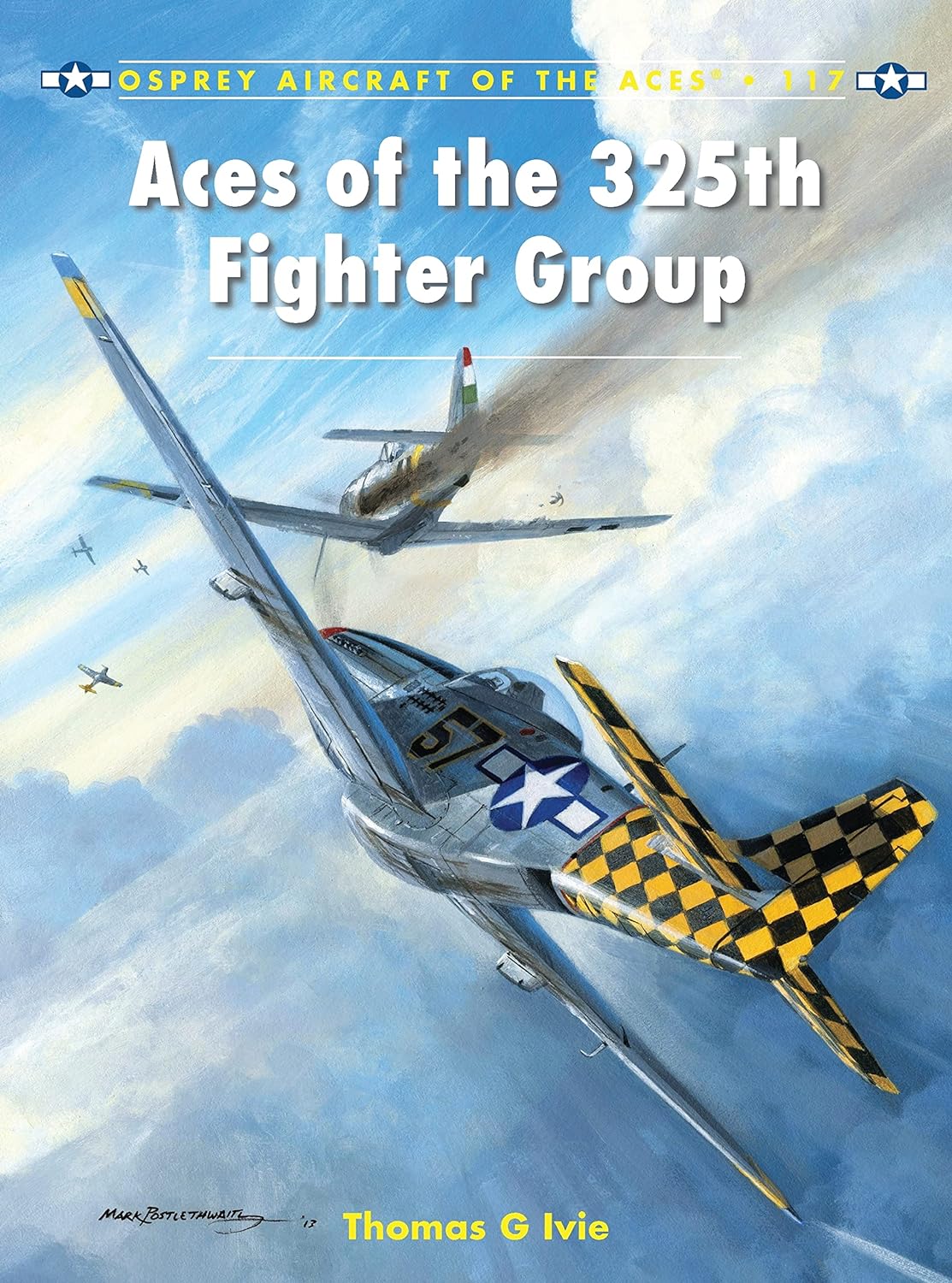
American pilots flew P-40 Warhawk, P-47 Thunderbolt, and P-51 Mustang
fighters over Noth Africa, Sicily, and Italy in the World War II
Mediterranean Theater of Operations as part of the 325th
Fighter Group.
The 325th FG was activated under General Order number 50 on
30 July 1942 and set up training operations at Theodore F Greene Field
in Providence, Rhode Island. By mid-December 1942 the group was
considered ready for combat and the alert for overseas duty arrived on 2
January 1943. The pilots and their P-40s departed on the carrier USS
Ranger on 8 January and flew their aircraft off the vessel into Cazes
airfield, near Casablanca, on 19 January 1943. After the remainder of
the personnel arrived in late February, the group prepared for combat,
and finally flew its first mission on 17 April 1943 as part of the
Twelfth Air Force. During the next four months it participated in the
North African campaign, and operations against enemy-held islands in the
Mediterranean Sea. By the end of the Sicilian campaign on 17 August the
325th FG had scored 128 aerial victories, been the first P-40
unit to deliver 1000-lb bombs against enemy targets, and had escorted
1100 bombers without losing a single one of them to enemy action.
In September 1943 the 325th began its conversion to the P-47
Thunderbolt and in late December headed for its new base in Italy.
During the next six months the 325th flew escort missions
over Italy and the Balkan countries as part of the Fifteenth Air Force.
During its P-47 period the 325th's pilots claimed 153 aerial
victories and established itself as a very aggressive escort group. In
May 1944 the 325th began converting to the P-51 Mustang,
which it flew with great success for the remainder of the war. Thirteen
of its 27 aces achieved this status while flying the Mustang. By VE Day
the 325th FG had destroyed 537 enemy aircraft in aerial
combat and 281 on the ground, as well as numerous ground targets such as
locomotives, trucks etc. The group was awarded two Distinguished Unit
Citations and its pilots earned numerous medals, including four
Distinguished Service Crosses, for individual bravery in combat. The
cost was high, however, as 148 pilots were lost in action - being killed
or becoming POWs.
|
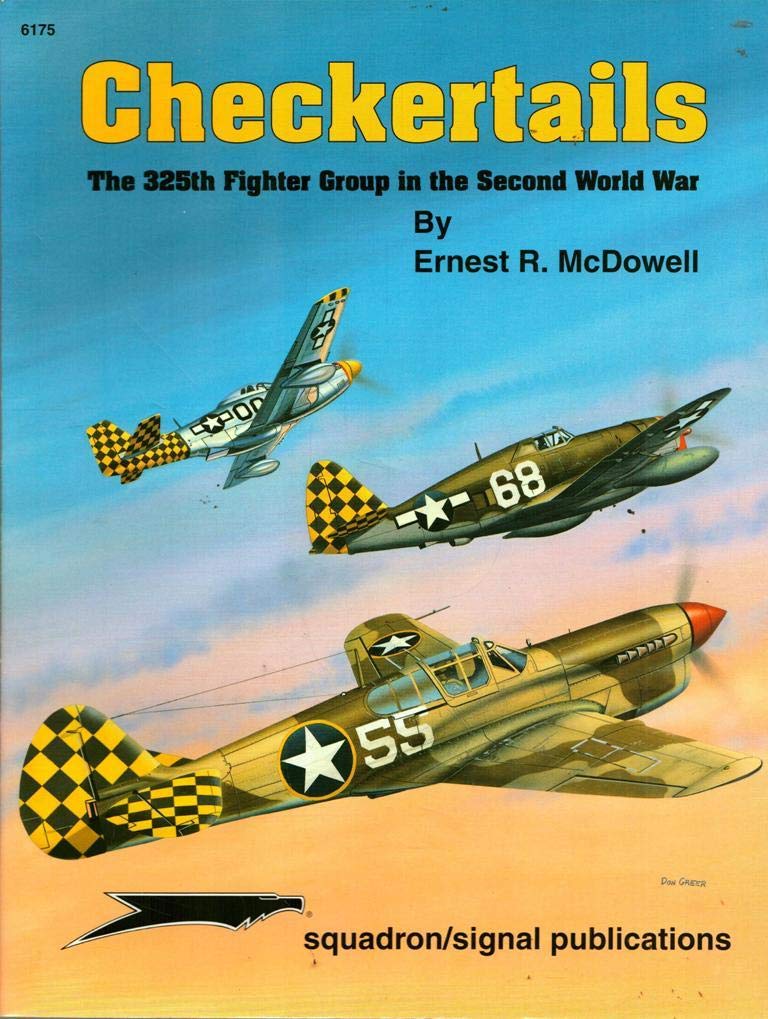
The Checkertail Clan was one of the
most famous FGs to serve in the MTO. Entering combat on April
17, 1943 flying P-40s, the 325th FG later re-equipped
with P-47s and ended the war flying P-51s. The Checkertails
compiled a combat record second to none - 550+ missions, 529
kills, 27 aces and 2 DUCs. The history of this renowned unit is
revisited in this excellent volume from author Ernie McDowell
and Squadron/Signal.
In no way is CHECKERTAILS a complete history of the 325th
at war. Rather it is a snapshot history of the Group. Various
sections describe 325th aces, pilots and ground crews
along with descriptions of the P-47, P-51 and special events in
the Group's history. Bob Baseler, Wayne Lowry, Herky Green and a
number of other 325th alumni contributed
reminiscences which really provides the reader with an insider's
look at the 325th at war.
Aside from the in-the-cockpit narratives, the book is a visual
delight! It contains over 250 black & white and five color
photographs along with eight pages of ABSOLUTELY SUPERB color
side-views of Group aircraft by Don Greer.
In short, CHECKERTAILS is a wonderful introduction to some of
the pilots and events that made the 325th FG one of
the top guns of the MTO air war. The illustrations alone are
well worth the $12.95 price tag. Add to that all the narratives
from Checkertail vets and you have one winner of a book on your
hands! Highly recommended. |
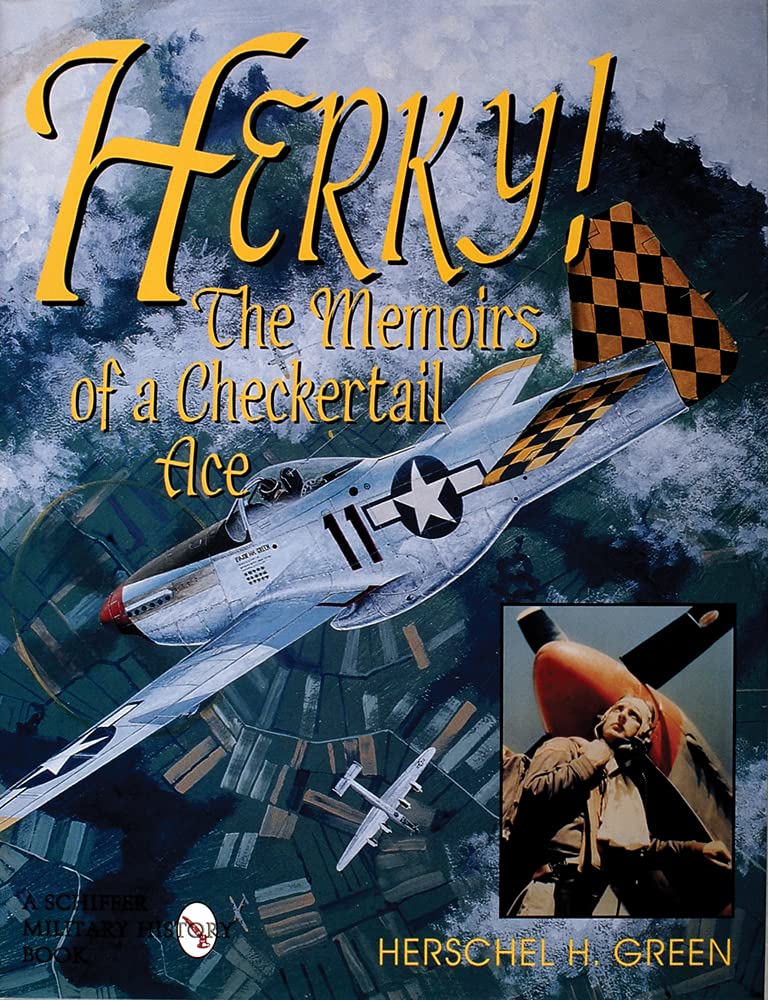
The dramatic life story of one of the legendary USAAF fighter
pilots of World War II who fought across the skies over the
Mediterranean and southern Europe in the great aerial campaigns
against the Luftwaffe – Herschel H. “Herky” Green. By the time
Colonel Green was grounded by orders of higher headquarters, he
was the leading ace of the Fifteenth Air Force with eighteen
aerial victories. |
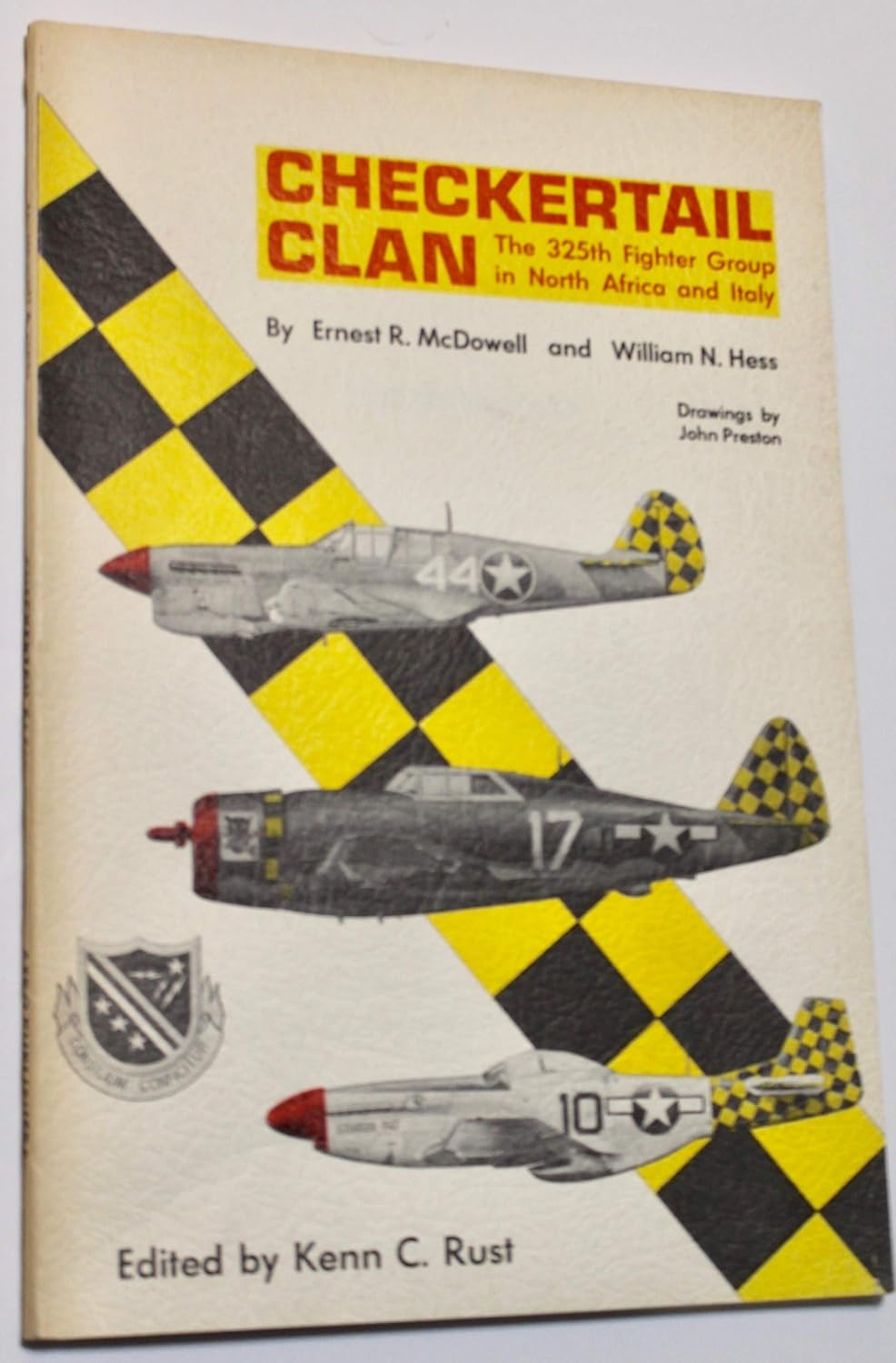
Good unit history of a group operating in the Med and Southern
Europe. The missions covered Sardinia, up the boot of Italy,
then into Austria, Romania, and Germany. Operating in many
roles, they attacked tactical targets, escorted bombers or
engaged in fighter sweeps. Bases were primitive and they often
moved to stay close to the forward lines. Range was always a
concern, as noted on the Sardinia missions: even with external
tanks, the Mediterranean was 150 miles each way- dogfighting had
to conclude within a few minutes in order to arrive back on
base. They adapted, persisting until the enemy signed the peace
treaty.
6 pages of 3-views, 16 pages of photos. |
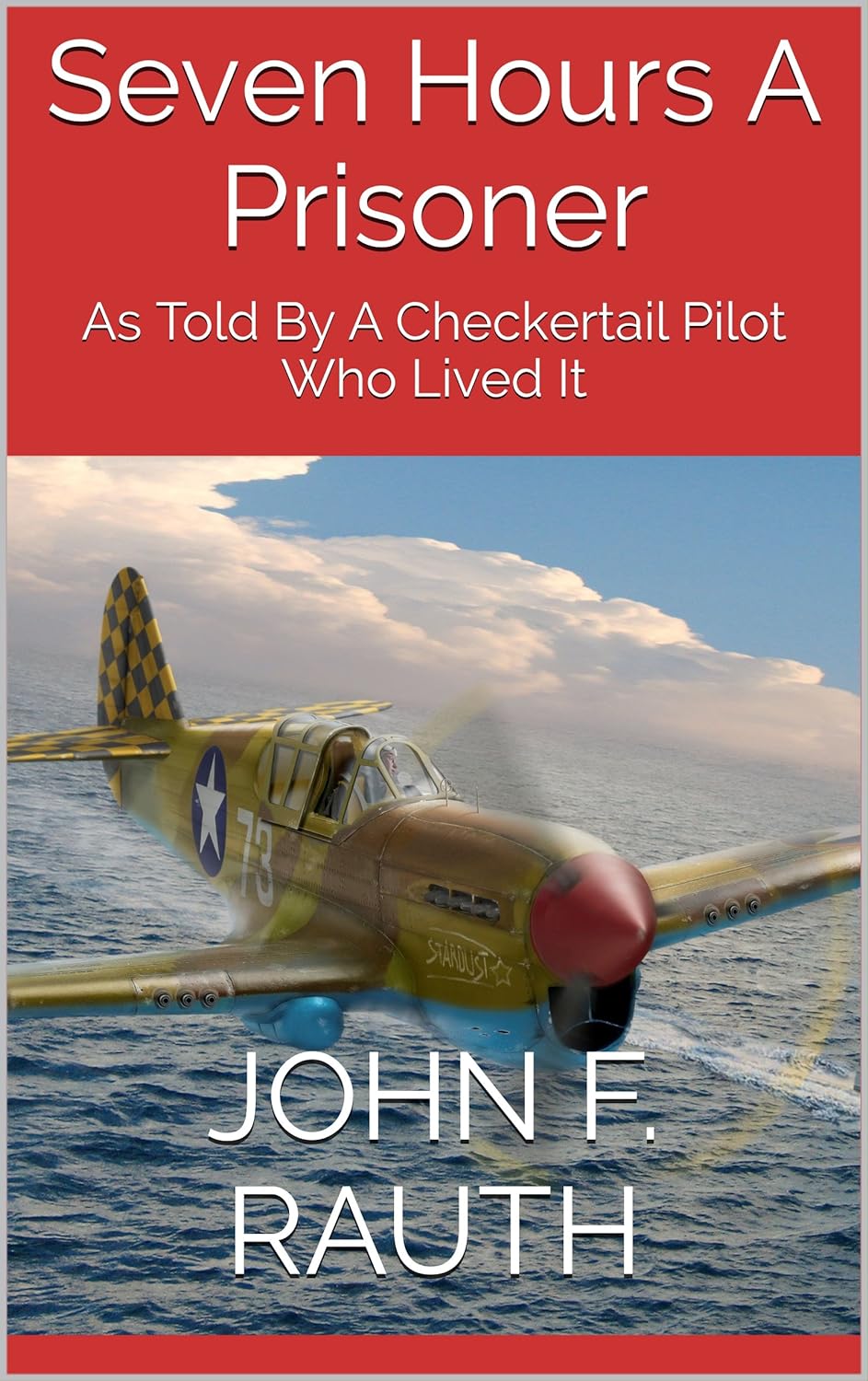
On July 23, 1943 Flight Officer John Rauth of the 325th
Fighter Group while engaged in a strafing run on a small motor
launch ferrying Italian Officers was hit in the radiator from
return fire. His P-40F, Stardust, claws for altitude as he
prepares for a low level bailout. Picked up by a Sicilian
fishing boat after hitting the water, Rauth is taken to the
Sicilian coast where he is taken prison by the Italian Army.
That evening, after watching their command post come under
attack by a US artillery barrage, they surrender to the
twenty-two year old American pilot. Between lunch and dinner,
Flight Officer John Rauth of the 319th Fighter
Squadron had become a prisoner of war, only to later accept the
surrender of a Italian Lt. Colonel, a Major, 2 Captains, 4
Lieutenants, 27 enlisted men and their cache of weapons. |

From an early age, a boy growing up on a farm in Dust Bowl
Kansas during the Great Depression dreamed of flying. Hard work,
dedication, and the hand of Divine Providence made that dream
come true. From accelerated flight training during World War
Two, through a career in the service of his country, to a
fifteen year career in corporate aviation -- here is the story
of his lifelong love affair with flying. |
